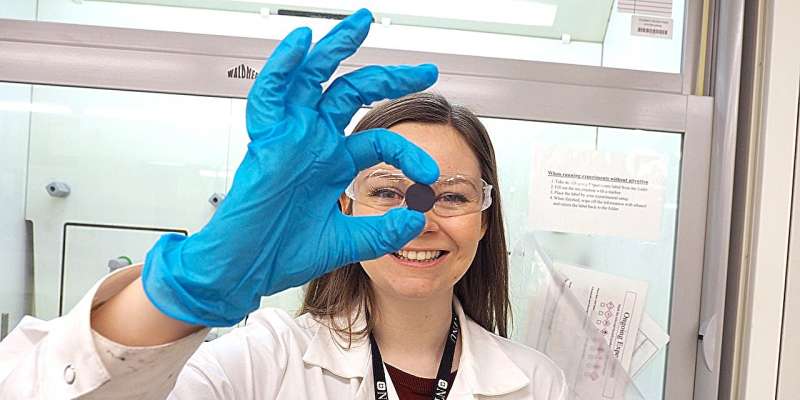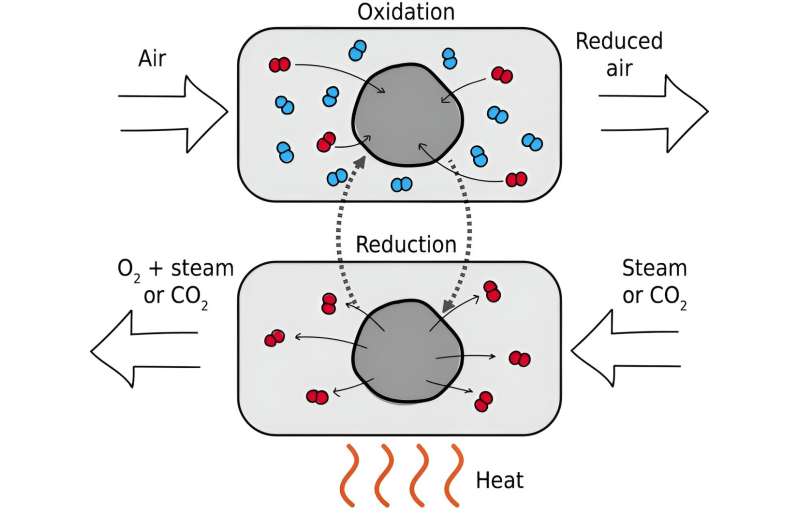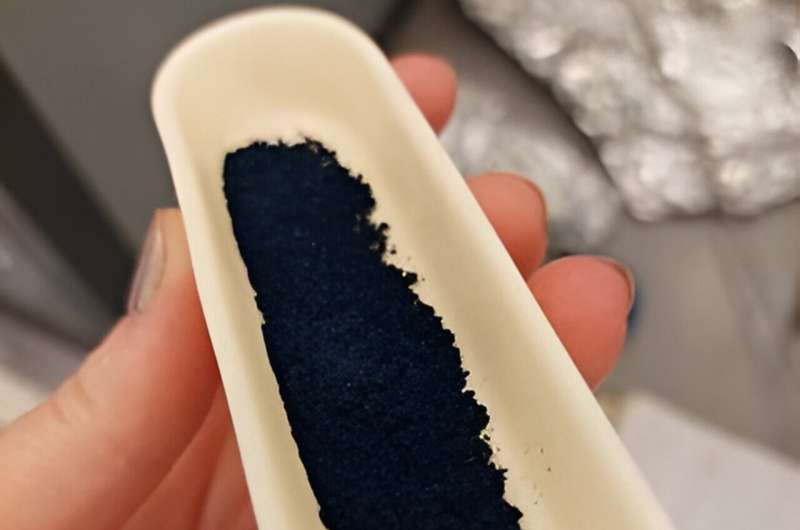This article has been reviewed according to Science X's editorial process and policies. Editors have highlighted the following attributes while ensuring the content's credibility:
fact-checked
peer-reviewed publication
trusted source
proofread
Cheap, dirty leftovers can release pure oxygen: Hexagonal manganites show promise for production on an industrial scale

New materials for producing oxygen may challenge traditional production methods. This is exciting news, because pure oxygen is in demand for many areas in industry and medicine.
"We have identified materials that can store and release pure oxygen much faster and at much lower temperatures than known materials currently used for this purpose," says Professor Sverre Magnus Selbach at the Norwegian University of Science and Technology (NTNU's) Department of Materials Science and Engineering.
Oxygen is an element, so it cannot be made, only released. The most common method is to distill oxygen directly from the air, but it can also be extracted from materials that have oxygen bound in them.
Retrieving oxygen from materials
Many materials absorb oxygen from the air. When these materials are heated up, they release this oxygen, and small changes in the materials can change their properties.
As the chemical process speeds up, scientists refer to "the kinetics being faster" in the material. The fact that this process can take place at low temperatures is a big advantage. Not only does it mean that less energy is required for heating, but also that reactors can be made from cheaper materials that will need less maintenance than if they had to be exposed to higher temperatures.
"Both of these improvements in material properties make the materials more competitive," says Frida Hemstad Danmo. The research was part of her doctoral work.
The research results have now been published in the journal Chemistry of Materials.

The wonder material
So, what kind of wonder material are we talking about? It might be a little surprising. Have you heard of hexagonal manganites?
Probably not. Almost no one has heard of hexagonal manganites. Fortunately, the researchers at NTNU have. The material is not only very suitable for extracting oxygen, it can also be made quite cheaply and efficiently.
"Because oxygen is absorbed so quickly into the material, we can use bulk materials that can be made in large quantities using cheaper methods than those required to make nanoparticles," explains Danmo.
If the oxygen transport was not already so rapid in these hexagonal manganites, the process would have required nanoparticles to increase surface area and provide the oxygen with a 'shorter way' in and out of the material.
Nanoparticles are more complicated to produce and cannot be made in large quantities as easily as bulk material.
Impurities in the material are unproblematic
The hexagonal manganites they have developed are so-called "high-entropy materials." This means that they are neither pure nor have a particularly well-ordered crystal structure, and this is where the secret lies.

Not only are the materials quite cheap, they are also not that particular when it comes to chemical composition. Impurities and small defects in the material are therefore not a problem. Things don't have to be so precise, the process works anyway, and it makes it possible to achieve cheaper production on an industrial scale.
The researchers used five to six different rare earth metals in the mix they experimented with, and the result was much better than when well-ordered materials with just one or two rare earth metals were used.
"The high-entropy materials are actually more stable than those with simpler chemical composition. The reason is the entropy, i.e. the disorder that comes from having many different elements in the crystal structure instead of fewer," says Selbach.
"All spontaneous processes will increase the disorder of the universe. Interestingly, it is the disorder itself that also provides such rapid oxygen absorption, since our materials are not sensitive to precise chemical composition. Focusing on high entropy is a paradigm shift for this particular class of materials, and something that has given us exceptional properties," says Danmo.
Using cheaper and available materials
These types of materials are not currently used in the industry, but a great deal of research is being done on them precisely because the potential for cheaper oxygen production is so great.
"Industry can use cheaper raw materials, such as oxides of recycled rare earth metals or low-quality ore. These raw materials remain after more expensive elements such as neodymium and dysprosium are extracted for use in electric motors in windmills and electric cars," says Selbach.
Industry may even be able to use waste materials from the production of electric motors.
In collaboration with Danmo, Aamund Westermoen conducted much of the experimental work. Senior Engineer Elvia Anabela Chavez Panduro contributed measurements at NTNU, and Kenneth Marshall and Dragos Stoian at the European Synchrotron Radiation Facility (ESRF) in France helped with the synchrotron measurements made at the Swiss–Norwegian Beamlines facility in Grenoble.
More information: Frida Hemstad Danmo et al, High-Entropy Hexagonal Manganites for Fast Oxygen Absorption and Release, Chemistry of Materials (2024). DOI: 10.1021/acs.chemmater.3c02702
Journal information: Chemistry of Materials
Provided by Norwegian University of Science and Technology




















